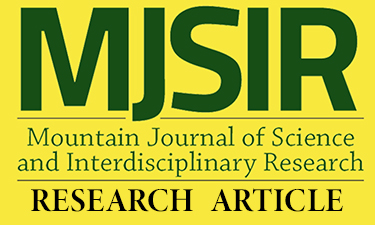BSU Time Use: Engaging Faculty Researchers Before and After the Disallowance Disaster
Main Article Content
Abstract
The study aimed to establish the work profile of the faculty researchers at Benguet State University (BSU) in relation to time use for both paid work and ‘other work’ in the context of Notice of Disallowances (NDs). Data were gathered through time use survey, individual in-depth interviews, conversations-with-a purpose and review of secondary documents. Findings show that faculty researchers have to perform multiple tasks, part of which is research that extends beyond working hours. The faculty researchers’ actual workload is nearly twice the required number of workload, and overload is not necessarily compensated. Though the provision on workload of the research and extension managers and personnel was already included in the Research and Extension Manual of Operations (REMO) 2015, it is not consistently implemented, accordingly due to budget implication. Nevertheless, despite the Audit Observation Memos (AOMs) and ‘disallowances’, BSU faculty researchers, particularly the ‘senior’ researchers, persisted to engage in research and development, even under increasingly difficult and unpaid work conditions. If left unattended, the stance of ‘less incentivizing’ atmosphere might define the future work values. More importantly, fewer faculty members might opt not to conduct research which would impact the University’s research and extension productivity.
Article Details
References
Batani, R.S., Banes, G.G., & Labon, K.O. (2015). Time Use Analysis: Women and Their Households as Sites for Everyday Negotiations and Organizing Community Life. Benguet State University Research Journal, 73: 31-46.
Calma, A. (2014). Challenges in Preparing Academic Staff for Research Training and Supervision: The Case of the Philippines. International Journal of Educational Management, 28(6): 705-715.
Chen, F., Bao, L., Lin, Z., Zimmer, Z., Gultiano, S., & Borja, J.B. (2018). Double Burden for Women in Mid- and Later Life: Evidence from Time-use profiles in Cebu, the Philippines. Ageing Society, 38(11): 2325-2355.
Commission on Higher Education. (2011). Implementing Guidelines on the Grant of Honoraria for CHED-Funded Programs and Projects (CHED Order No. 2 Series of 2011). https://ched.gov.ph/wp-content/uploads/CHEDOrder-No.-02-s.-2011-on-Honoraria.pdf
Davies, R. (2013). Work-life balance. Measures to help reconcile work, private and family life. Library Briefing: Library of the European Parliament. https://www.europarl.europa.eu/RegData/bibliotheque/briefing/2013/130549/LDM_BRI(2013)130549_REV1_EN.pd
Department of Science and Technology – Philippine Council for Agriculture, Aquatic, and Natural resources Research and Development (DOSTPCAARRD). (2016). A Critical Review of the Importance of Honorarium in Promoting Research Excellence (Policy Brief May 2016). http://www.pcaarrd.dost.gov.ph/home/portal/index.php/a-critical-review-of-the-importanceof-honorarium-in-promoting-researchexcellence/file
Duff A., & Marriott, N. (2012). Teaching and Research: partners or competitors? The Institute of Chartered Accountants of Scotland. University of the West of Scotland.
European Foundation for the Improvement of Living and Working Conditions. (2007). Time use survey highlights changing working conditions. https://www.eurofound.europa.eu/sites/default/files/ef_files/ewco/surveyreports/LV0701019D/LV0701019D.pdf
Economic and Social Commission for Asia and the Pacific. (2000). The World's Wome. New York: UK.
Economic and Social Commission for Asia and the Pacific. (2003). Integrating Unpaid Work into National Policies. United Nations.
Gross, J. & Swirski, B. (2012). Time Use Surveys and Gender Equality. Adva Center. Information on Equality and Socilal Justice. Israel. https://adva.org/wp-content/uploads/2014/09/TimeUse-Surveys-and-Gender-Equality.pdf
Houston, D., Meyer, L.H., & Paewai, S. (2006). Academic Staff Workloads and Job Satisfaction: Expectations and values in academe. Journal of Higher Education Policy and Management, 28(1): 17-30.
Japan International Cooperation Agency. (2015). Data Collection Survey for Higher Education Sector in the Philippines: Final Report. https://openjicareport.jica.go.jp/247/247/247_118_12233029.html
Launio, C.C., Samuel, F.K.D., Bañez, A.A., & CamfiliTalastas, M. (2018). Motivation and Demotivation of BSU Faculty Members in Doing Research, Publishing, and Mentoring. Benguet State University: Annual In-House Review Ongoing Report.
The Organization for Economic Cooperation and Development. (2016). OECD Family Database. http://www.oecd.org/els/family/database.htm
Prince, M.J., Felder, R.M., & Brent, R. (2007). Does Faculty Research Improve Undergraduate teaching? An Analysis of Existing and Potential Synergies. Journal of Engineering Education, 96(4): 283-294.
Romainville. (1996). Teaching and Research at University: A Difficullt Pairing. Higher Education Management, 8: 8-10.
Salazar-Clemeña, R., & Almonte-Acosta, S. (2007). Developing Research Culture Philippine Higher Education Institutions: Perspectives of University Faculty. Competition, Cooperation and Change in the Academic Profession: Shaping Higher Education’s Contribution to Knowledge and Research. Hangzhou, China.
Salom M.D. (2013). Research Capability of the Faculty Members of Don Mariano Marcos Memorial National State University (DMMMSU) Mid La Union Campus. E – International Scientific Research Journal, 5 (2), 45-55.
Villanueva, L.M. (2014). Letter of Appeal to the Commission on Audit.

